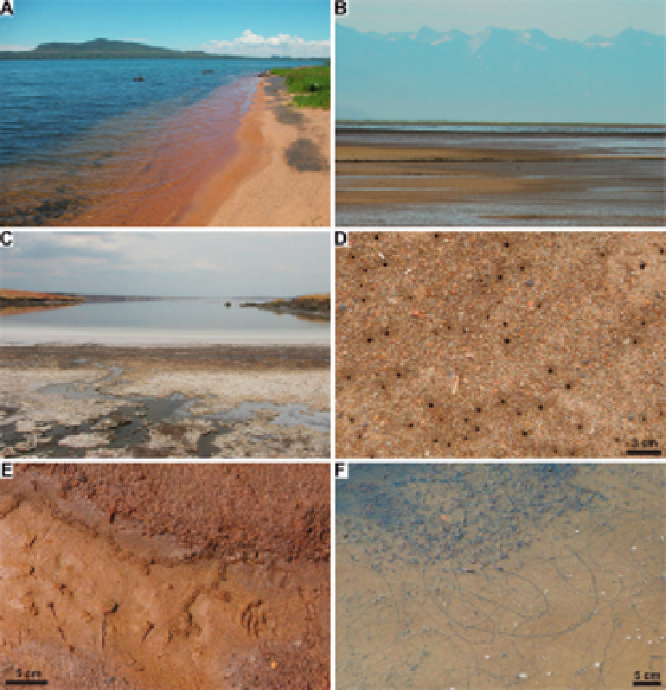Environmental Engineering Reference
In-Depth Information
FIGURE 1
Modern lakes and animal traces produced in littoral to eulittoral zones. (A) Freshwater
sandy shoreline of north-eastern Lake Victoria, Kenya. (B) Extensive sandy mud flats of the eastern
Great Salt Lake, Utah, USA. (C) Organic-rich hypersaline mud flats at Nasikie Engida (Little Magadi),
Kenya. (D) Plan view of circular vertical burrows produced by tiger beetle larvae in eulittoral sandy
swash zone deposits, saline LakeBogoria, Kenya. Photograph courtesy of R. Renaut. (E) Branched, sur-
face-tunnel networks of crickets and a mongoose footprint in eulittoral sandy mud flats, saline Lake
Bogoria,Kenya. (F) Surface trails of dipteran larvae in very shallowwater at saline LakeMagadi, Kenya.
influences the depth of the water table in surrounding terrestrial environments,
determines the extent of lake-level fluctuations in lake margins, influences the
extent of oxygenated shallow lacustrine waters, and partly determines the depth
of the lake. Additionally, the bedrock geology within the catchment may
strongly influence clastic and chemical sedimentation as well as the abiotic fac-
tors that impact the behavior and distribution of organisms, such as pH, ionic
concentrations, salinity, and turbidity of inflow waters (
Gierlowski-Kordesch,
2010; Renaut and Gierlowski-Kordesch, 2010
).
The zonation scheme of environments within lake basins presented here
(
Table 1
) allows the general characterization of the sets of conditions that deter-
mine the nature of sedimentation and the typical biological assemblages present










Search WWH ::

Custom Search